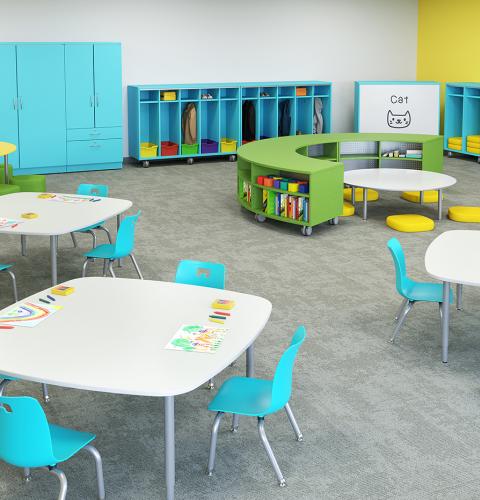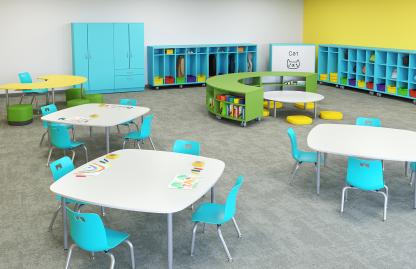
Teaching Method
Personalize
Student Behavior
Group
Space
Clusters
Info-Medium
Low Technology
Insights for Preschool Classrooms
Early childhood education is vital to a student’s long-term success. This investment in the future begins with space that allows for posture changes and helps students move easily from station to station. Take advantage of our broad palette to color-code areas within the room. Mobile furniture makes it easy to create larger open space, whether for group singalong or a row of mats at rest time.
